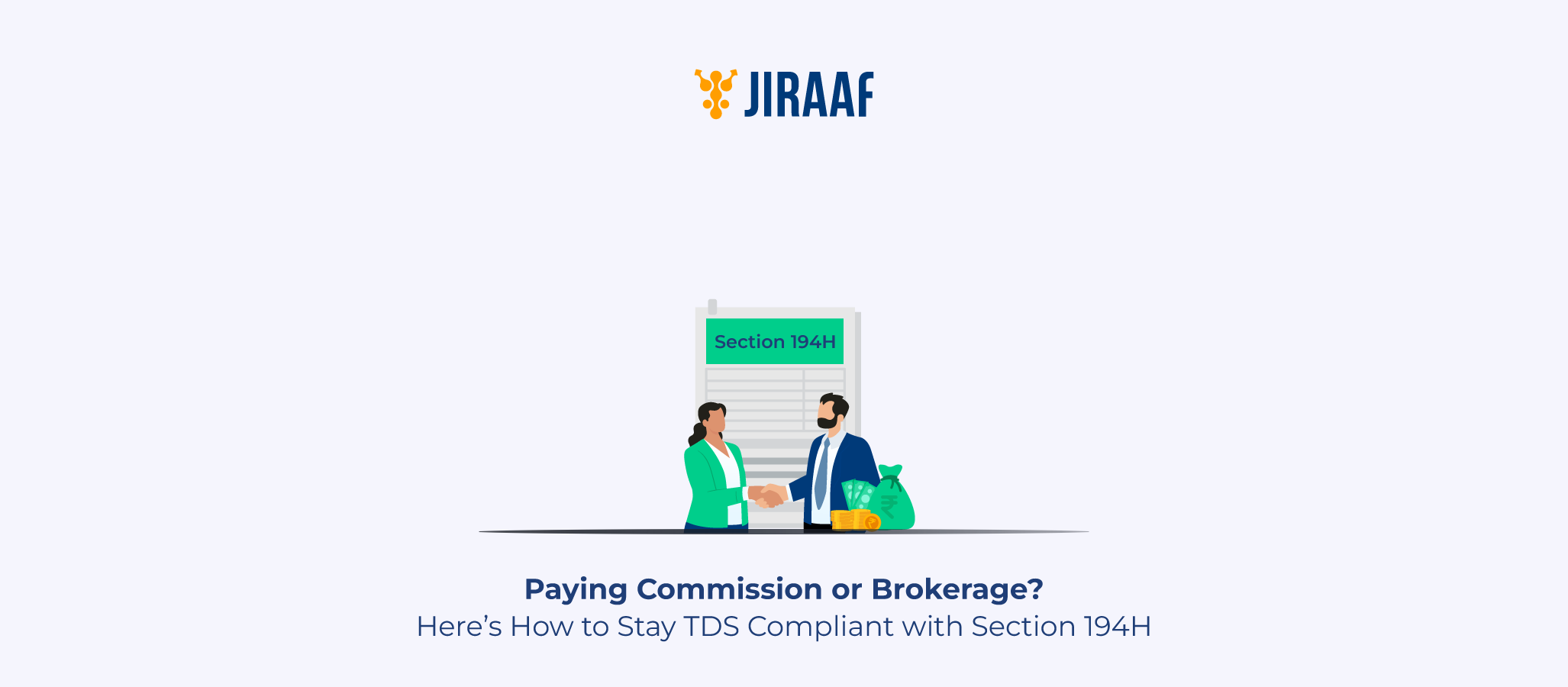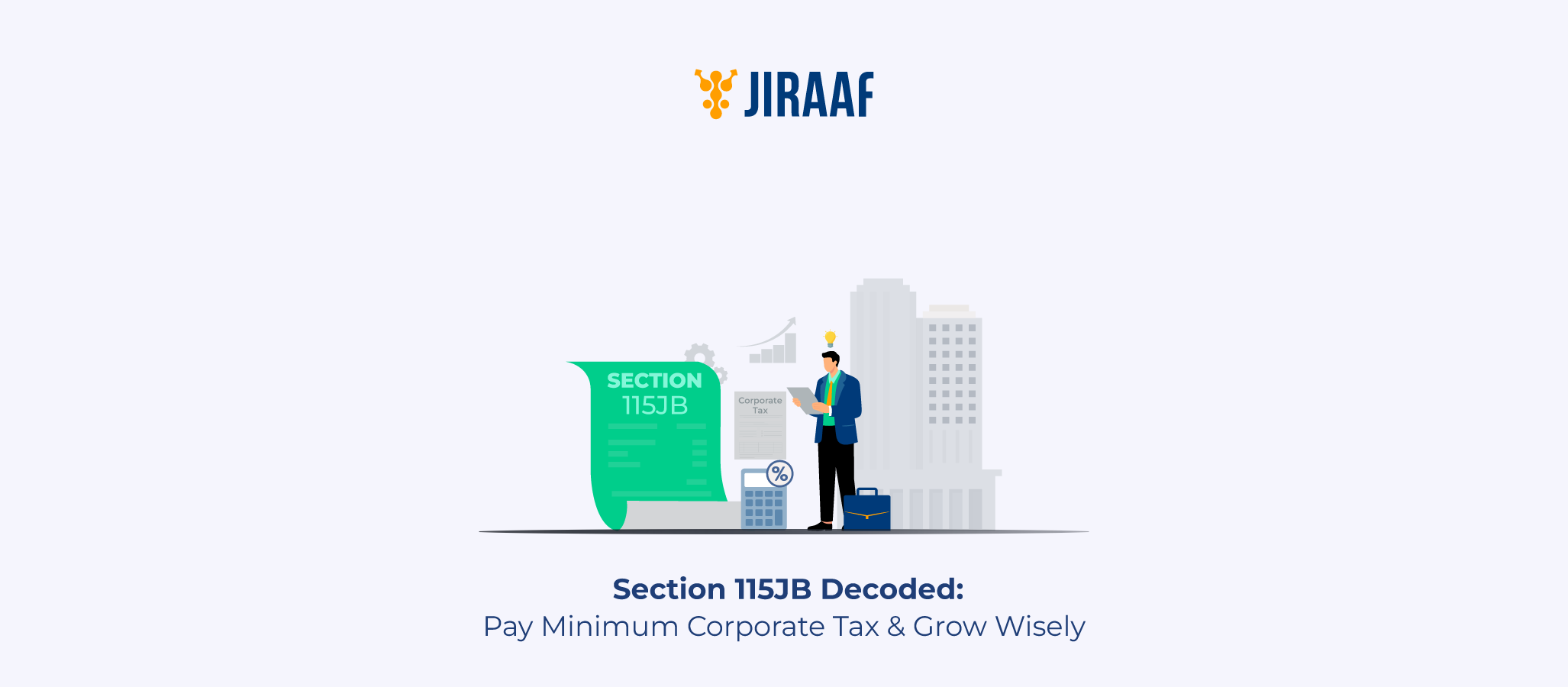When businesses or professionals pay commission or brokerage, they must deal with a lesser known but crucial provision in Indian tax law named Section 194H of the Income Tax Act. This section mandates Tax Deducted at Source (TDS) on payments related to commissions or brokerages.
Whether you’re a startup paying referral commissions or a real estate company disbursing broker fees, this provision can significantly impact your compliance obligations and cash flow. In this guide, you’ll learn what Section 194H covers, the current TDS rates, exemptions, and how to stay compliant.
What is Section 194H of the Income Tax Act?
Section 194H governs the deduction of TDS on payments made as commission or brokerage (excluding insurance commissions covered under Section 194D).
Definition of Commission and Brokerage
As per the Act, commission or brokerage includes any payment received or receivable—directly or indirectly—by a person acting as an agent for
- Selling or buying goods,
- Rendering services,
- Facilitating any transaction.
This also includes referral commissions and marketing incentives, making it widely applicable across industries.
Who is Required to Deduct TDS Under Section 194H?
The following entities are liable to deduct TDS under Section 194H:
- Individuals or Hindu Undivided Families (HUFs) under tax audit in the previous financial year
- Partnership firms
- Companies
- LLPs
- Trusts and Associations of Persons (AOPs)
Not Required to Deduct If
- You’re an individual or HUF not covered under audit provisions of Section 44AB.
- The total commission or brokerage paid does not exceed ₹15,000 in a financial year (for payments made up to March 31, 2025). For payments on or after April 1, 2025, the threshold is increased to ₹20,000 in a financial year.
TDS Rate Under Section 194H (Latest)
| Condition | Applicable TDS Rate |
| Recipient has furnished PAN | 5% (up to September 30, 2024), 2% (from October 1, 2024, onwards) |
| PAN not furnished | 20% (Section 206AA applies) |
| Payment in cash (no separate exemption) | Still applicable at above rates |
Note: No surcharge or cess is added to the TDS rate under this section. The new lower rate of 2% applies to payments/credits from October 1, 2024.
Exemptions and Exceptions Under Section 194H
Section 194H offers a few exemptions and exceptions, which include
- Threshold Exemption: TDS is not required if the total amount paid or credited during the financial year to a person does not exceed ₹15,000 (before April 1, 2025) or ₹20,000 (on/after April 1, 2025).
- Personal Transactions: Commission or brokerage paid for personal purposes by an individual or HUF is not subject to TDS.
- Insurance Commission: Governed by Section 194D, not 194H.
- Reimbursement of Expenses: Not considered commission if backed by invoices.
Time of Deduction and Payment to Government
TDS must be deducted at the time of credit to the payee’s account or payment, whichever is earlier.
Due Dates for TDS Deposit:
| Month of Deduction | Due Date for Deposit |
| April–February | 7th of the following month |
| March | 30th April of the next FY |
The deposit must be made using Challan 281.
TDS Return Filing and Form 16A Issuance
Once TDS is deducted and deposited, you must file quarterly TDS returns using Form 26Q.
Due Dates for Form 26Q
| Quarter | Due Date |
| April–June | 31st July |
| July–September | 31st October |
| October–December | 31st January |
| January–March | 31st May |
Also, issue Form 16A (TDS certificate) within 15 days from the due date of filing the return.
Penalties and Consequences of Non-compliance
| Type of Default | Consequence |
| Failure to deduct TDS | Disallowance of expense under Section 40(a)(ia) |
| Late deposit of TDS | Interest @1.5% per month |
| Non-filing of TDS return | Penalty of ₹200 per day (Section 234E) |
| Non-issuance of Form 16A | Penalty up to ₹100 per day |
Best Practices for Section 194H Compliance
| Practice | Why It Matters |
| Maintain vendor agreements | Clearly define whether the payout is commission or fees |
| PAN verification of payees | Avoid 20% TDS rate due to non-furnishing of PAN |
| Automated accounting and TDS tracking | Prevent missed deductions or late filings |
| Quarterly internal audit of TDS compliance | Stay prepared for scrutiny and avoid last-minute hassles |
Section 194H at a Glance
| Aspect | Details |
| Applicability | Commission/Brokerage > ₹15,000 (before April 1, 2025); > ₹20,000 (from April 1, 2025) |
| TDS Rate (with PAN) | 5% (up to Sept 30, 2024); 2% (from Oct 1, 2024 onwards) |
| TDS Rate (without PAN) | 20% |
| Time of Deduction | Credit or Payment—whichever is earlier |
| Form for TDS Return | Form 26Q |
| Certificate Issued | Form 16A |
Final Thoughts: Stay Proactive, Stay Compliant
TDS under Section 194H may seem like a minor detail in your accounts payable, but failing to handle it properly can have major repercussions—ranging from tax disallowances to hefty penalties. As your business scales and vendor relationships grow, proactive TDS compliance isn’t just good practice—it’s a financial safeguard.
Need a quick way to manage TDS? Use digital TDS filing tools or consult a tax advisor to automate the process.
Discover fixed income investments with Jiraaf, a SEBI registered online bonds platform that educates and brings access to a wide array of bonds. Sign up today to explore diversified fixed income investment opportunities to support your goal-based wealth creation journey. Start investing!









